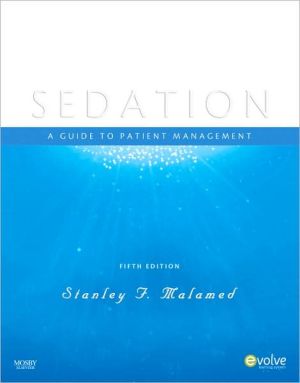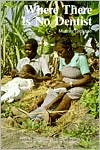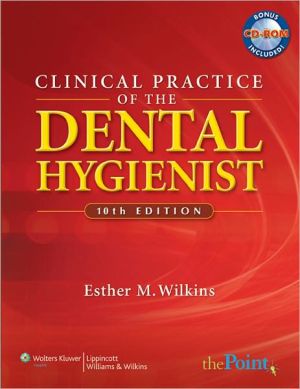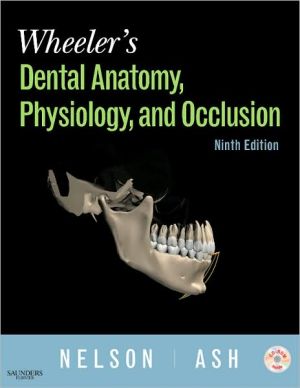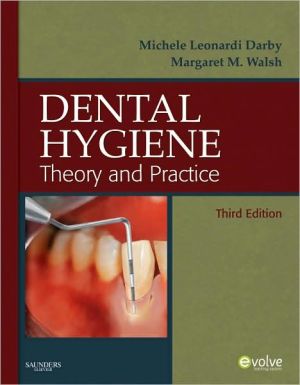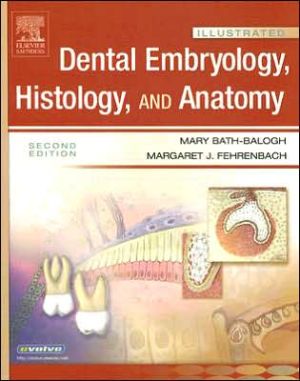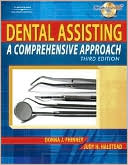Sedation: A Guide to Patient Management
Combining essential theory with “how-to” technical instruction, this concise guide is the leading reference for basic techniques in sedation and anxiety control in the dental office. The latest guidelines from the ADA and the American Society of Anesthesiologists keep you up-to-date with the latest medical standards. Content on patient management for pediatric, geriatric, physically compromised, and medically compromised patients helps you successfully treat any patient population.\ •...
Search in google:
This definitive, authoritative clinical manual stands alone in the field of patient sedation. Combining essential theory with technical instruction, it presents "everything in a nutshell" for the practicing professional and student of dentistry. Key factors such as the physical, emotional, and mental condition of the patient - as well as required ADA guidelines - are incorporated into sedation techniques designed to improve the patient's overall dental experience. The result is an indispensable book, expert in its professional protocols and techniques, and comprehensive in its wide-ranging considerations. Detailed chapters, divided into eight parts, are devoted to topics on: the problem of fear and anxiety in dentistry; pain and anxiety control; pharmacosedation; history and techniques of general anesthesia; inhalation and intravenous sedation, preparation and management of emergencies in the dental office; and sedation for special needs patients - pediatric, geriatric, and medical and physically compromised patients.• Written by an acknowledged expert in the field, the book draws on a wealth of clinical experience and ability. • Combines all aspects of sedation with essential theoretical and technical instruction. • Techniques are divided into sections on pharmacology, armamentarium, and technique and complications - described in explicit detail that allows it to be used as a chairside reference. • Pharmacosedation is covered in full, with discussions of oral, rectal, and IM premedication, as well as nine chapters on inhalation sedation and ten chapters on IV sedation. • Covers all of the components required by the ADA guidelines: review of cardiovascular and respiratory physiology; selection of agents; techniques of administration; and management of complications and emergencies. • Step-by-step descriptions of inhalation sedation (nitrous oxide and oxygen) and intravenous sedation provide a superb clinical "picture" of the procedures. • Chapters on pediatric, geriatric and physically and medically compromised patients offer valuable, up-to-date information on the management of these special needs patients. • In-depth discussions of the pharmacology of commonly used sedative agents allow the reader to fully understand properties and characteristics of drugs used.• Content has been completely updated to include the most current drug dosage information. • More information on recreational abuse of nitrous oxide reflects the current societal trends. • The latest American Heart Association recommendations help prevent bacterial endocarditis. • Increased emphasis on nitrous oxide/oxygen, as many dental hygienists are becoming certified to administer this form of sedation. • New contributors lend credibility and experience to each topic discussed. • Content outlines at the beginning of each chapter allow for quick reference of specific topics. • Improved illustrations and photographs offer a fresh look, with high-quality art to aid in the visualization of techniques and procedures.Spanish version of 3rd edition also available, ISBN: 84-8174-136-1 Scott W. Podlesh This is the third edition of this popular textbook. The previous edition was published in 1989. Like the previous edition, this book attempts to provide the basic concepts needed for understanding both the pharmacology and clinical techniques used in outpatient dental sedation. The book also discusses in detail possible complication and emergency situations that occur during outpatient anesthesia. This book is designed to be used by students of dentistry, both at the doctoral and postdoctoral levels, as an adjunct to training in sedation that provides clinical management of patients in a properly supervised environment. This book includes many charts, illustrations, and black-and-white photographs. Unfortunately, the charts frequently lack the information needed to make them useful as quick references, and many of the photographs are dated and of poor quality. The references have been updated but remain predominantly unchanged from the previous edition. The index is complete and easy to use. This is a very useful book for those dental students (both doctoral and postdoctoral) interested in pursuing training in outpatient sedation. Although this is a fine textbook, a mistake in the index should be noted. Dr. Malamed writes, ""In November of 1994 the American Dental Association recognized dental anesthesiology as a dental specialty."" In fact, the American Dental Association voted in November 1994 to not recognize dental anesthesiology as a dental specialty.
Sect. IIntroduction11Pain and Anxiety in Dentistry2Sect. IISpectrum of Pain and Anxiety Control72Introduction to Conscious Sedation93The Spectrum of Pain and Anxiety Control164Physical and Psychological Evaluation265Monitoring during Conscious Sedation556Nondrug Techniques: Iatrosedation and Hypnosis78Sect. IIIOral, Rectal, and Intramuscular Sedation877Oral Sedation898Rectal Sedation1169Sublingual, Transdermal, and Intranasal Sedation12310Intramuscular Sedation132Sect. IVInhalation Sedation16711Inhalation Sedation: Historical Perspective17012Pharmacosedation: Rationale18513Pharmacology, Anatomy, and Physiology19614Armamentarium21015Inhalation Sedation: Techniques of Administration23716Inhalation Sedation: Complications25717Contemporary Issues Surrounding Nitrous Oxide26218Practical Considerations27019Teaching Inhalation Sedation: History and Present Guidelines275Sect. VIntravenous Sedation27920Intravenous Sedation: Historical Perspective28121Intravenous Conscious Sedation: Rationale28522Armamentarium29223Anatomy for Venipuncture30324Venipuncture Technique31325Pharmacology32826Intravenous Sedation: Techniques of Administration37727Intravenous Sedation: Complications40028Practical Considerations41929Guidelines for Teaching422Sect. VIGeneral Anesthesia42530Fundamentals of General Anesthesia42731Armamentarium, Drugs, and Techniques437Sect. VIIEmergency Preparation and Management45932Preparation for Emergencies46233Emergency Drugs and Equipment46734Management of Emergencies481Sect. VIIISpecial Considerations52335The Pediatric Patient52536The Geriatric Patient54437The Medically Compromised Patient55038The Physically Compromised Patient57939Neurologic Illnesses and Other Conditions585Appendix592
\ Scott W. PodleshThis is the third edition of this popular textbook. The previous edition was published in 1989. Like the previous edition, this book attempts to provide the basic concepts needed for understanding both the pharmacology and clinical techniques used in outpatient dental sedation. The book also discusses in detail possible complication and emergency situations that occur during outpatient anesthesia. This book is designed to be used by students of dentistry, both at the doctoral and postdoctoral levels, as an adjunct to training in sedation that provides clinical management of patients in a properly supervised environment. This book includes many charts, illustrations, and black-and-white photographs. Unfortunately, the charts frequently lack the information needed to make them useful as quick references, and many of the photographs are dated and of poor quality. The references have been updated but remain predominantly unchanged from the previous edition. The index is complete and easy to use. This is a very useful book for those dental students (both doctoral and postdoctoral) interested in pursuing training in outpatient sedation. Although this is a fine textbook, a mistake in the index should be noted. Dr. Malamed writes, ""In November of 1994 the American Dental Association recognized dental anesthesiology as a dental specialty."" In fact, the American Dental Association voted in November 1994 to not recognize dental anesthesiology as a dental specialty.\ \ \ \ \ From the PublisherREVIEW OF CURRENT EDITION:\ "This is the 4th edition of a popular textbook presently used by many dental schools in North America. For this edition, Dr. Malamed enlisted the help of Dr. Morris Clark, who co-authored the section on inhalational sedation, as well as Dr. Kenneth Reed, who upgraded the section on medically compromised patients. In addition to the improvements engendered by these co-authors, many of the illustrations and diagrams have been updated, and overall the new edition is superior to the third edition. The primary target audiences are pre- and post-doctoral dental students wishing to learn more about sedation and anxiety control. Increasingly, other medical practitioners such as podiatrists, plastic and reconstructive surgeons, and even gastroenterologists are performing office sedation and they too would find this book very useful."\ - Journal of Prosthodontics - March 2004\ \ \ \ From The CriticsReviewer: Scott W. Podlesh, DDS(University of Chicago Medical Center)\ Description: This is the third edition of this popular textbook. The previous edition was published in 1989.\ Purpose: Like the previous edition, this book attempts to provide the basic concepts needed for understanding both the pharmacology and clinical techniques used in outpatient dental sedation. The book also discusses in detail possible complication and emergency situations that occur during outpatient anesthesia.\ Audience: This book is designed to be used by students of dentistry, both at the doctoral and postdoctoral levels, as an adjunct to training in sedation that provides clinical management of patients in a properly supervised environment.\ Features: This book includes many charts, illustrations, and black-and-white photographs. Unfortunately, the charts frequently lack the information needed to make them useful as quick references, and many of the photographs are dated and of poor quality. The references have been updated but remain predominantly unchanged from the previous edition. The index is complete and easy to use.\ Assessment: This is a very useful book for those dental students (both doctoral and postdoctoral) interested in pursuing training in outpatient sedation. Although this is a fine textbook, a mistake in the index should be noted. Dr. Malamed writes, "In November of 1994 the American Dental Association recognized dental anesthesiology as a dental specialty." In fact, the American Dental Association voted in November 1994 to not recognize dental anesthesiology as a dental specialty.\ \ \ \ \ 3 Stars from Doody\ \
